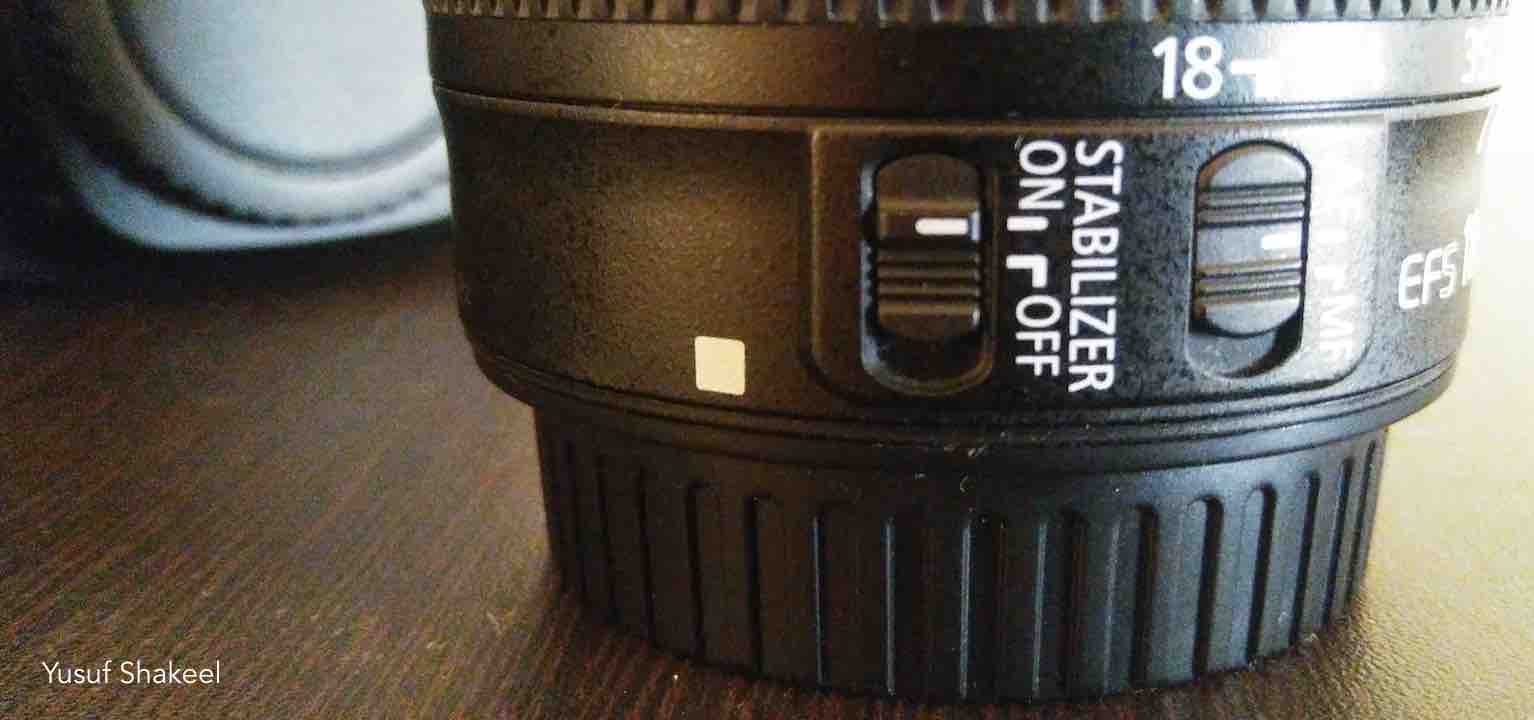DSLR - How to read camera lens
DSLR

In this tutorial we will learn to read DSLR camera lenses.
ZOOM Lens
A lens having variable focal length.

If we look at the lens we can see some text. In the above picture we have the following text.
CANON ZOOM LENS EF-S 18-55mm 1:3.5-5.6 IS STM
And we have the following text at the bottom of the lens.
Φ 58mm
Lets break the text into pieces and see their meaning.
CANON
The first word is the name of the company. In this case it is a CANON lens.
If you have lets say a Sigma lens then the first word may be SIGMA.
ZOOM LENS
The next words are ZOOM LENS which simply means it is a zoom lens. And since it is a zoom lens so, we have variable focal length for this lens.
EF-S
The full form of EF-S is "Electro Focus S" where "S" in EF-S comes from "Small image circle", meaning a camera with a smaller sensor compared to full frame sensor.
EF-S lens mount is a derivative of the EF lens mount by Canon. EF-S lens are used mostly in APS-C (Advanced Photo System type-C) camera like Canon EOS 80D.
In short, EF-S lens is for cropped sensor camera. And EF is for full frame camera.
Note! We can use EF lens on cropped sensor camera too. But the focal length will change.
18-55mm
This is the focal length. This lens has a minimum focal length of 18mm and maximum focal length of 55mm. And since this is a ZOOM LENS so we have a variable focal length.
When the lens is at 18mm then we get a wider view. And when the lens is at 55mm then we get a narror view.
If your lens has a smaller focal length lets say 10mm then it is a wide angle lens. And if you have a lets say 700mm lens then its a long lens and it has a narrow angle of view.
1:3.5-5.6
The next set of numbers denote the aperture or the iris of the lens.
This lens has an aperture of 3.5 for 18mm focal length and aperture of 5.6 for 55mm focal length.
Remember: Smaller the aperture number more the light allowed to enter by the lens. And bigger the aperture number lesser the light allowed.
Though this lens has a 3.5 aperture it is still not great for low light scenarios. If you are planning to shot video or picture in low light environment then consider getting a lower aperture number lens like 2.4 or 1.8 or smaller.
IS
This stands for Image Stabilization. This means that lhe lens can stabilize the image/video when shooting handheld.
STM
STM stands for Stepper Motor. Its a motor in Canon lens which allows the camera to adjust focus without making much noise.
This is great for shooting videos as the lens won't be making noise when the camera makes auto focus on moving subject.
Φ 58mm
This is the diameter for the ND (Neutral Density) filter.
Now lets check the sides of the camera.
MACRO

In the above image we can see the text "MACRO 0.25m/0.8ft". This means that the camera lens can shoot a subject from a minimum distance of 0.25 meter or 0.8 feet.
MACRO here means how close we can get to the subject.
AF-MF

In the above image we can see a switch which says "AF and MF".
AF stands for Auto Focus and when the lens is set to AF mode then the lens performs the focusing for you.
MF stands for Manual Focus and when the lens is set to MF mode then we have to adjust the focus.
STABILIZER

We have one more switch and its is the STABILIZER switch. When this is set to ON mode then the Image Stabilizer is turned on. And when we set it to OFF mode then the Image Stabilizer is turned off.
If you are shooting video then keep the Stabilizer ON.
PRIME Lens
Lens having fixed focal length.

In the above image we have a CANON lens. If we look closer we can see the following text.
CANON LENS EF 50mm 1:1.4
So, this is a Canon lens and it is a EF lens.
It is a PRIME lens as it has a fixed focal length of 50mm.
50mm lenses are also called nifty-fifty.
This lens has a fixed 1.4 aperture which makes it a great lens for low light shooting of pictures.
ADVERTISEMENT